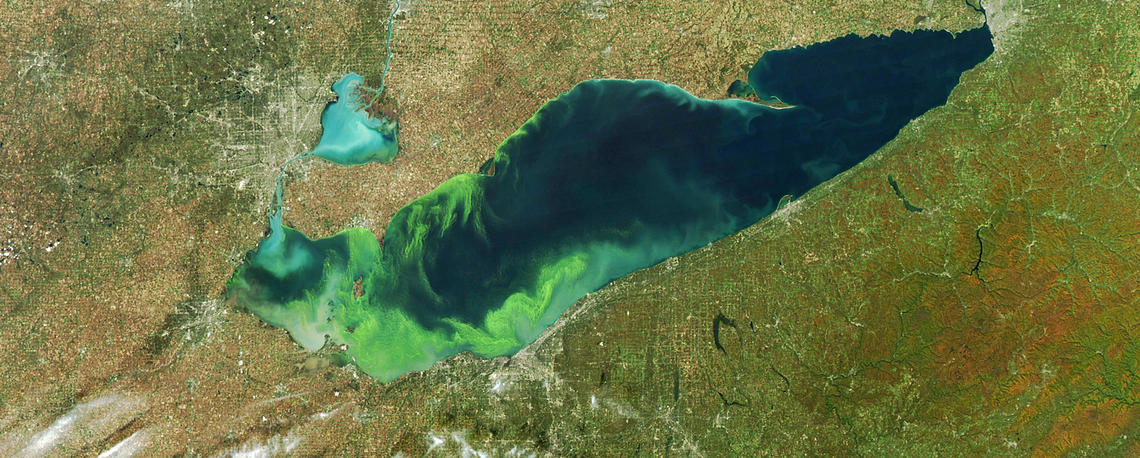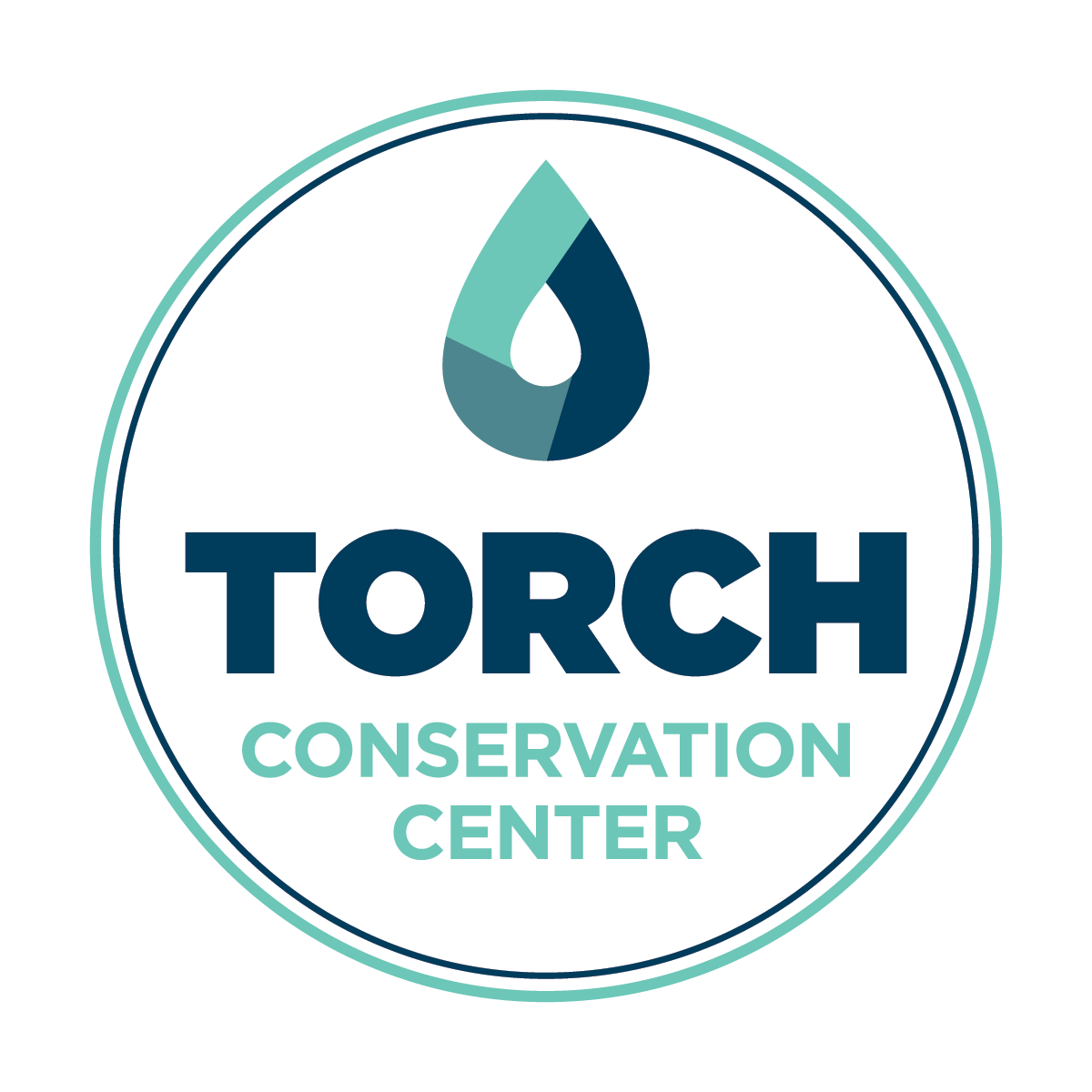
Harmful Algal Blooms (HAB)
Harmful algal blooms occur when conditions change in a waterbody:
- excess nutrients
- high water temperatures
- a rapid increase in the number of blue- green algae
Excess nutrients enter our lakes from many sources:
- lawn fertilizers
- failing & malfunctioning septic systems
- pet waste
- farms (fertilizers and animal manure)
- sewage treatment plants (Bellaire, Central Lake and Elk Rapids)
High water temperatures have been reported in Torch Lake. Parts of Torch Lake reached 80°F in 2020.
Key Facts
- Harmful algal blooms can harm you, your family and pets, fish and other aquatic creatures, property values and the local tourist economy.
- An algal bloom occurs when there is increased growth of microscopic plants called algae.
- Most freshwater harmful algal blooms contain native blue-green algae (also called cyanobacteria.)
- Blue-green algae can, but don’t always, produce toxins called cyanotoxins. A common cyanotoxin is called microcystin.
- It is difficult to tell if an algal bloom is harmful just by looking at it, so it has to be tested. If an algal bloom contains enough toxins, it is called a Harmful Algal Bloom (HAB).
- Invasive zebra mussels can contribute to a bloom. Zebra mussels are selective filter feeders. They prefer other plankton over cyanobacteria. Zebra mussels are found throughout the Chain of Lakes.

Satellite view of a well-known Harmful Algal Bloom in Lake Erie Photo: USGS
Did You Know?
- Algal blooms are becoming more frequent and larger due to global warming. (Stanford University, 2019)
- In Michigan, algal blooms occur from summer to fall, as the water warms above 65°.
- Most algal blooms disappear on their own within a few days or weeks when water temperatures decline.
- The Elk River Chain of Lakes has been experiencing algal blooms.
| Year | Lake | Harmful Algal Bloom | Actions Taken |
|---|---|---|---|
| 2006 | Lake Bellaire | NO | Tested |
| 2019 | Intermediate Lake | Unknown | Dispersed before it could be tested |
| 2019 | Six Mile Lake | YES | Tested & treated |
| 2020 | Beals Lake | NO | Tested |

- Blue-green algal blooms are buoyant and found on the water surface.

Algal Bloom- Beals Lake. August 2020. Photo: Trish Narwold
- Harmful algal blooms can be seen by the naked eye as small flecks, globs, slicks, mats or spilled paint in a variety of colors: green, blue, brown and red.
- They may produce a bad smell.
- Golden brown algae, (GBA) are NOT harmful.
Golden brown algae are found on the lake floor.
Golden brown algae are composed primarily of a type of phytoplankton called diatoms not blue-green algae. Diatoms do not release toxins.
Show
You Care
We know you want to enjoy the lake for many years (and generations) to come. So, we’ve put together a list of simple steps you can take to reduce the nutrients, sediments and toxins flowing into the lake and its streams.
SEEK Medical Attention
If you or your pet had skin contact or swallowed water with algal bloom AND ARE EXPERIENCING SYMPTOMS: rash, runny eyes or nose, asthma-like symptoms, abdominal pain, vomiting, diarrhea, weakness, numbness, headaches, dizziness or difficult breathing-
- Contact your health care provider and/or call Poison Control 800 222-1222.
- Contact your veterinarian immediately if pets or livestock show signs of illness from contact with a harmful algal bloom.
PREVENT Harmful Algal Blooms
Keep nutrients from entering your lake:
- Pump your septic every 3 years.
- Do not fertilize your lawn. Kick the Fertilizer Habit.
- Do not mow your grass all the way to the lake.
- Plant a Native Plant Buffer and Trees between your lake and the lawn.
- Plant a Rain Garden to collect stormwater from around your driveway and any perimeter drain around your house and garage.
- Pick up pet waste within 100 ft of the water and dispose in trash.
REPORT A Suspected Harmful Algal Bloom
- Do not swim, wade or touch the water.
- Keep people, especially children and pets away from the water until advised otherwise.
- Take a photo with your phone.
- Contact
- Michigan Department of the Environment and Great Lakes
800-662-9278
algalbloom@michigan.gov
Gary Kohlhepp 517 230-7548 - Health Department of NW Michigan
Dr. Josh Meyerson 231 547 7679
j.meyerson@nwhealth.org - Your local lake association.
- Michigan Department of the Environment and Great Lakes
- Michigan EGLE may send out a representative to gather a sample of the algal bloom for laboratory testing. If toxins are present at a dangerous level, the Health Department will be notified and post water contact advisories.
WATERpedia: the “One-Stop Shop” for Water Science A-Z
A-E
F-M
N-S
T-Z
Don't just wish that Torch Lake will stay blue.
Choose a water-friendly lifestyle - make a difference!
